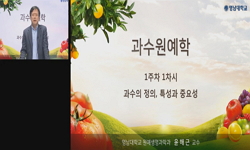韓國禮學史의 展開에 있어서 15世紀는 五禮 위주의 國家的 禮制가 성립된 시기였고, 16世紀는 性理學의 入門書인 『小學』이 중시되어 『小學』중심의 禮 觀念이 一般化되고, 또 禮의 社會...
http://chineseinput.net/에서 pinyin(병음)방식으로 중국어를 변환할 수 있습니다.
변환된 중국어를 복사하여 사용하시면 됩니다.
- 中文 을 입력하시려면 zhongwen을 입력하시고 space를누르시면됩니다.
- 北京 을 입력하시려면 beijing을 입력하시고 space를 누르시면 됩니다.
https://www.riss.kr/link?id=T8961437
- 저자
-
발행사항
서울 : 연세대학교 교육대학원, 2003
-
학위논문사항
학위논문(석사)-- 연세대학교 교육대학원: 윤리교육전공 2003. 8
-
발행연도
2003
-
작성언어
한국어
-
주제어
김장생 ; 예학 ; 오례 ; 소학 ; 가례 ; 예치주의 ; 거경준례 ; 직사상 ; 주경사상 ; 진지 ; 춘추의리정신 ; 도학정치 ; Kim Jang-Saeng ; proprieties ; Orye ; Sohak ; Karye ; proprietism ; Keogyeongjunrye ; thought of Jik and Jugyung ; ChunchuUirijeongsin ; politics of Dohak
-
KDC
190 판사항(4)
-
발행국(도시)
서울
-
형태사항
vi, 121p. ; 26 cm.
-
일반주기명
지도교수: 신규탁
- 소장기관
-
0
상세조회 -
0
다운로드
부가정보
국문 초록 (Abstract)
韓國禮學史의 展開에 있어서 15世紀는 五禮 위주의 國家的 禮制가 성립된 시기였고, 16世紀는 性理學의 入門書인 『小學』이 중시되어 『小學』중심의 禮 觀念이 一般化되고, 또 禮의 社會化가 강조되어 『家禮』의 流行과 함께 鄕約·書院 등이 새롭게 대두된 時期였다. 17世紀의 禮學의 成立과 禮學時代의 出現은 다른 한편으로 禮 秩序의 恢復이 시급했던 17世紀初의 政治·社會的 분위기와 이에 부응하려는 山林과 執權勢力의 禮治主義 實現에 대한 노력, 그리고 變禮的 王室 禮를 둘러싼 山林係 學者層 및 高級官僚들의 빈번한 禮 論爭(禮訟)의 결과이기도 했다. 이와 같은 禮學의 발생과 成立過程에 있어 그 先驅가 될만한 人物을 찾는다면 龜峯 宋翼弼(1534~1599)을 들 수 있으며, 그는 獨自的으로 禮學을 개척했다는 점에서 禮學의 先驅者로 불릴만 하다. 그의 門下에서 沙溪 金長生과 守夢 鄭曄등 많은 學者가 배출되었는데 門下生들 거의가 栗谷에게서 理學을 배우고 龜峯에게서 禮學을 배웠으므로 理學과 禮學을 겸비한 學者들이라고 하겠다.
朝鮮禮學의 泰斗라고 불리우게 된 그는 意識的인 實踐과 躬行에 禮學의 본지가 있다고 생각하여 居敬遵禮를 行하였으며 『家禮輯覽』, 『疑禮問解』, 『喪禮備要』, 『典禮問答』 등을 지어 종래 行用에만 한정된 禮의 관념을 學問的인 방향으로 轉換시켰다.
沙溪 金長生은 17세기 韓國의 道學者 가운데에서 가장 代表的인 人物로서, 壬辰倭亂과 丙子胡亂 이후 朝鮮의 國家精神과 社會發展의 方向을 제시한 장본인이다.
沙溪의 學問形成에 있어서 直接的으로 많은 影響을 미친 스승은 宋翼弼과 李珥임은 再論의 여지가 없으며, 그밖에도 成渾, 李之함, 鄭經世, 申義慶의 영향 또한 적지 않았을 것으로 생각된다.
金長生의 學問과 精神은 '眞知'의 探究요 實踐이라고 요약할 수 있으며, 이러한 金長生의 眞知實踐精神은 韓國道學精神의 正統的인 繼承이었고 朝鮮後期 畿湖學派의 道學으로 이어지는데에 큰 役割을 담당했다. 그의 眞知 실천 정신은 直의 정신으로 요약되었고, 直의 정신은 宋時烈에게 이어져 강력한 春秋義理精神으로 發揚되었다.
禮治의 핵심은 宗法을 통한 統의 수립을 이루어 孝悌忠信의 社會的 氣風을 정립하려 한 것이다. 朝鮮朝의 政治的 傳統에 따라 儒敎的 政治 理念에 의거한 王道政治의 추구, 君主 中心의 君主政治論, 爲民을 실현하는 民本政治論이 沙溪의 政治思想의 특징임을 알 수 있다. 沙溪의 政治思想은 결국 朝鮮朝 政治思想의 맥락에서 儒敎的 이상인 王道政治를 추구하는 君主政治思想이면서 爲民政治思想이다. 그리고 朝鮮朝의 대표적인 改革論者인 栗谷의 理想과 일맥상통하는 것이라고 볼 수 있다.
沙溪 金長生의 禮學이 『朱子家禮』를 發揚시키는데 一貫한 것도 龜峯의 朱子家禮註說의 기초 위에 수립된 것이니 敎學·著述 등이 龜峯과 서로 일관된 것으로 沙溪를 栗谷의 理學과 龜峯의 禮學을 傳授받았다고 하는 것이다.
이러한 金長生의 禮學은 朝鮮 後期 學問界에 다음과 같이 큰 영향을 미쳤다.
첫째, 金長生의 禮學 이후 士林들은 禮學을 學問의 한 영역으로 認識하게 되었다.
둘째, 金長生은 家禮를 중심으로 하는 禮 施行을 중시했는데, 이러한 家禮 중심의 禮 施行方針은 朝鮮 후기 禮行의 기반이었다.
셋째, 金長生은 性理學的 禮制를 定立하였음은 물론 그 禮行을 일반 백성의 삶 속에 實踐하도록 普遍化시켰다.
넷째, 金長生은 姑息的인 古禮의 遵行이 아니라 時俗에 맞는 禮制를 만들기 위해 노력하였으며, 이러한 合理的 禮精神은 후세 禮學의 기반이 되었다.
이러한 金長生의 禮思想과 그 精神은 人間의 相互交流가 힘에 의한 支配·服從의 관계가 아니라 人間의 어진 마음과 바른 마음으로 서로 대하는 信賴의 關係를 追求하고 具體化한 人道主義를 內包하고 있다는 점이 중요한 意義라고 할 수 있다.
이러한 相互의 權利와 義務를 尊重하는 謙讓과 調和의 정신, 自己節制를 통한 人格의 完成을 기약하는 克己復禮의 정신은 社會樣相이 다양해지고 尖銳한 利益關係가 支配的인 오늘날의 現實 속에서 더욱 되살펴 볼 귀중한 精神이며 또한 繼承 發展시켜야 할 價値라고 생각된다.
이와 같이 이러한 金長生의 學問과 思想은 오늘날에도 人間性의 涵養, 바람직한 家庭觀, 책임 있는 社會的 役割 등 韓國人의 價値觀에 큰 영향을 미치고 있으며, 참다운 人格完成과 건전한 家庭, 文化國家로서의 韓國未來 建設을 위해 되새겨야할 가르침을 여전히 드리우고 있다.
다국어 초록 (Multilingual Abstract)
According to Korean propriety, Orye(五禮)-centered national propriety was completed in the 15th century, and 『Sohak』(小學), the guide book of Sung Confucianism, was accounted so much of in the 16th century that Sohak- oriented thought on propr...
According to Korean propriety, Orye(五禮)-centered national propriety was completed in the 15th century, and 『Sohak』(小學), the guide book of Sung Confucianism, was accounted so much of in the 16th century that Sohak- oriented thought on propriety was popular. Also, remarkable features in this century were the popularity of 『Karye』(家禮) and the appearance of Hyangyak(鄕約) and Sowon(書院) owing to the emphasis of popularization of the propriety. In the 17th century, proprieties(禮學) was completed and it was at the zenith of its prosperity because of many factors such as the political and social atmosphere to restore the order of propriety, the efforts of Sanrim(山林) and people in power to realize the proprietism(禮治主義) and the frequent discussions on royal propriety among Sanrimgye(山林係) scholars and high officials. In the process of appearance and formation of proprieties(禮學), Kubong Song Ik-Pil(龜峯 宋翼弼: 1534-1599) played an important role and he deserves to be called as a forerunner because he opened up proprieties for himself. Many scholars including Sagye Kim Jang-Saeng(沙溪 金長生) and Sumong Jung Yob(守夢 鄭曄) learned proprieties(禮學) from him and most of them also learned Li(理學) from Yulgok(栗谷), so they were the scholars who combined both proprieties(禮學) and Li Xue(理學).
Among them, he is called a great authority of Chosun proprieties. He thought that the essence of proprieties consisted in the conscious practice and Kunghaeng(躬行), so he practiced Keogyeongjunrye(居敬遵禮) and wrote 『Karyejipram』(家禮輯覽), 『Uiryemunhae』(疑禮問解), 『Sangryebiyo』(喪禮備要), 『Jeonryemundab』(典禮問答), and so on.
Sagye Kim Jang-Saeng was a representative moralists in the 17th century, being a person who showed the national spirit of Chosun and the way of developing the society after Limjinwaeran(壬辰倭亂) and Byeongjahoran(丙子胡亂).
Sagye's idea formation was influced by Songikpil(宋翼弼) and Yiyi(李珥), besides very much similarity of Sunghon(成渾), Lijiham(李之함), Junggyungse(鄭經世) and Shinuigyung(申義慶).
Kim Jang-Saeng’s spiritual thought could be summarized as the investigation and practice of true meaning(眞知) in the trend of Dohak thought.
Furthermore, His spirit of practicing true meaning was integrated into the spirit of Jik(直), and then this spirit came down to Songsiyeol(宋時烈) who enhanced the strong ChunchuUirijeongsin(春秋義理精神).
Corresponding to the political tradition of Chosun dynasty, Confucian ideology of politics, Sagye’s political thoughts are characterized as the pursuit of a kingly way of government, monarchy-centered politics and democracy for people. Also, his thoughts had a thread of connection with those of Yulgok who was a representative among Chosun reformers.
Sagye consistently uplifted jujagarye(朱子家禮) in his proprieties which was founded on Kwibong’s Jujagaryejuseol(朱子家禮註設), and his lectures and writings had in common with Kwibong's, so Sagye is said to have received Yulgok’s Li(理) and Kubong’s propriety(禮).
Kim Jang-Saeng’s proprieties had an great influence on the study lineage of late Chosun as follows.
Firstly, after Kim Jang-Saeng’s proprieties, Sarim(士林) regarded proprieties(禮學) as a study field.
Secondly, Kim Jang-Saeng put a great importance on Karye-centered proprieties and this Karye-centered proprieties was a basis in late Chosun society.
Thirdly, Kim Jang-Saeng not only established the propriety of Sung Confucianism but made his propriety popularized for the common people to practice it in their everyday lives.
Finally, Kim Jang-Saeng did not stick to the old propriety but he tried to form right propriety suitable for those days' culture, so his rational approach to make out the right propriety was the basis for the later proprieties.
Kim Jang-Saeng’s thought and spirit of proprieties show that right human relations lie not in those of domination-obedience by power but in those of trust demanding compassionate and right heart, and his thought and spirit of proprieties have a significance in terms of involving humanism.
The spirit of Keuggibogrye(克己復禮), marked by the mind of modesty and harmony respecting each other's rights and duties and the fulfillment of personality through self-restraint, is a very valuable property in modern society where concerns for profit are spread and it should be succeeded to the next generation.
Through the whole his life, he contributed much to the Korean values in many ways such as cultivation of humanity, thoughts on sound home, responsible social role and so on.
목차 (Table of Contents)
- 국문요약
- Ⅰ. 머리말 = 1
- 1. 硏究의 必要性과 目的 = 1
- 2. 硏究 方法 = 3
- Ⅱ. 朝鮮朝 禮學의 成立過程 = 6
- 국문요약
- Ⅰ. 머리말 = 1
- 1. 硏究의 必要性과 目的 = 1
- 2. 硏究 方法 = 3
- Ⅱ. 朝鮮朝 禮學의 成立過程 = 6
- 1. 禮의 受容過程과 朝鮮 禮學의 淵源 = 6
- 2. 朝鮮朝 禮學의 成立背景 = 11
- 3. 禮學派의 形成과 發達過程 = 16
- Ⅲ. 沙溪 金長生의 生涯와 學問 = 28
- 1. 受學과 學德 = 28
- 2. 沙溪의 師承관계와 思想的 淵源 = 35
- 3. 遯巖書院의 講學活動 = 42
- 3.1. 遯巖書院의 講學內容 = 44
- 3.2. 遯巖書院의 講學特性 = 46
- 4. 金長生의 學問精神과 그 影響 = 50
- Ⅳ. 沙溪 金長生의 思想的 特徵 = 56
- 1. 政治 思想 = 56
- 2. 敎育 思想 = 61
- 3. 文學 思想 = 68
- 4. 哲學 思想 = 71
- 4.1. 理氣說 = 71
- 4.2. 格致說 = 72
- 4.3. 人心道心說과 四七說 = 75
- Ⅴ. 沙溪 金長生 禮學思想의 成立과 特性 = 81
- 1. 沙溪禮學의 基礎 = 81
- 2. 沙溪의 禮書와 禮學思想 = 86
- 2.1. 『喪禮備要』와 禮論 = 86
- 2.2. 『家禮輯覽』과 禮論 = 90
- 2.3. 『疑禮問解』와 禮論 = 93
- 2.4. 『典禮問答』과 禮論 = 95
- 3. 沙溪 禮學의 社會的 具現 = 100
- 3.1. 禮學思想과 그 影響 = 100
- 3.2. 社會政治思想과 그 影響 = 103
- 3.2.1. 禮治思想의 影響 = 103
- 3.2.2. 朝鮮後期 社會變化에의 影響 = 106
- Ⅵ. 맺음말 = 109
- 參考文獻 = 113
- ABSTRACT = 118









